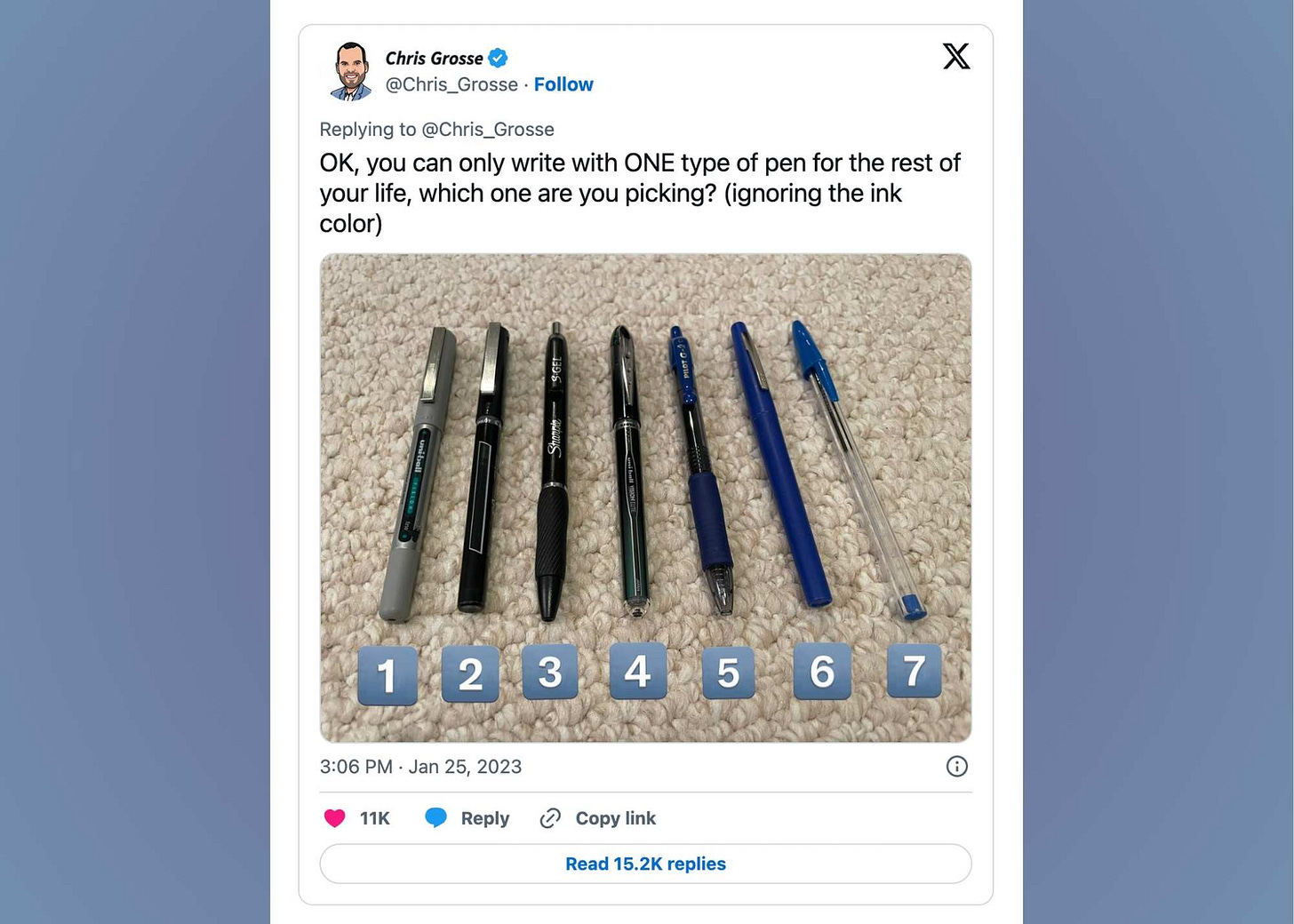5 Factors That Are Impacted By The Design of GLP-1 Pens
If you missed the introduction to this series about GLP-1s and product insights in digital health, you can read it here.
Have you seen this viral tweet about pens? Did you know approximately 1.6 billion disposable plastic pens are thrown away every year in the United States alone?
Today, however, we’re talking about a different kind of pen: the GLP-1 pen. Generally speaking, there are two designs. Novo Nordisk’s GLP-1s, liraglutide (Victoza and Saxenda) and semaglutide (Ozempic and Wegovy), are offered in multi-dose pens. Eli Lilly’s GLP-1, tirzepatide (Mounjaro and Zepbound), is available in single-dose pens. Both pen designs have tradeoffs, with the following five factors being most affected.
1. Ease of use
The single-dose pens deliver the prescribed dose at the touch of a button. Easy-peasy. The multi-dose pens have a bit more complexity, but this also enables more flexibility. With multi-dose pens, patients set the dose themselves by turning the dose selector at the end of the pen. This creates an audible clicking sound.
Patients and prescribers alike quickly realized that with multi-dose pens, people can count the number of clicks in order to select a different dose than those intended by the manufacturer. This off-label “click dosing” strategy can be useful for a variety of reasons.
2. Side effects
Multi-dose GLP-1 pens make personalized treatment plans possible. For example, if a patient isn’t able to tolerate the side effects they experience at the standard starter dose, click dosing provides a way for them to begin with an even lower dose. Similarly, click dosing enables patients to mitigate side effects by up-titrating the medication gradually when their prescribed dose is increased throughout the course of treatment.
3. Cost
Some patients use click counting to administer smaller doses of medication than they were prescribed. In this way, they can stretch their supply and even build up a stockpile. This approach can be cost-effective, but it likely conflicts with the medication’s expiration date. For example, Ozempic officially expires 56 days after first use.
4. Shortage ramifications
In addition to lowering treatment costs, patients might use click counting as a strategy for navigating potential medication shortages. When patients aren’t able to fill a prescription, click counting can help the pen(s) they have last longer. Sometimes, when the starter dose GLP-1 pens are hard to find, the pens intended for larger doses are still available. Click counting enables patients to administer a lower dose when using a pen intended for higher doses.
5. Waste and sustainability
Of course, click dosing is not sanctioned by pharmaceutical companies. The official prescribing information for Ozempic specifically says, “Do not set the dose by counting the number of clicks you hear. […] Do not count the pen clicks.” Novo Nordisk explains that click dosing could result in inaccurate dosing and product waste.
However, in terms of waste, there is a far more glaring reality. A patient starting Ozempic will use one pen throughout the first four weeks of treatment, whereas a patient starting Zepbound will use four pens in the same period of time. The medical waste is piling up.
The way GLP-1 pens are designed is very intentional. There are a number of tradeoffs to consider when deciding between multi-dose or single-dose pens, and so far, this is something that differentiates the Novo Nordisk and Eli Lilly GLP-1 products.





